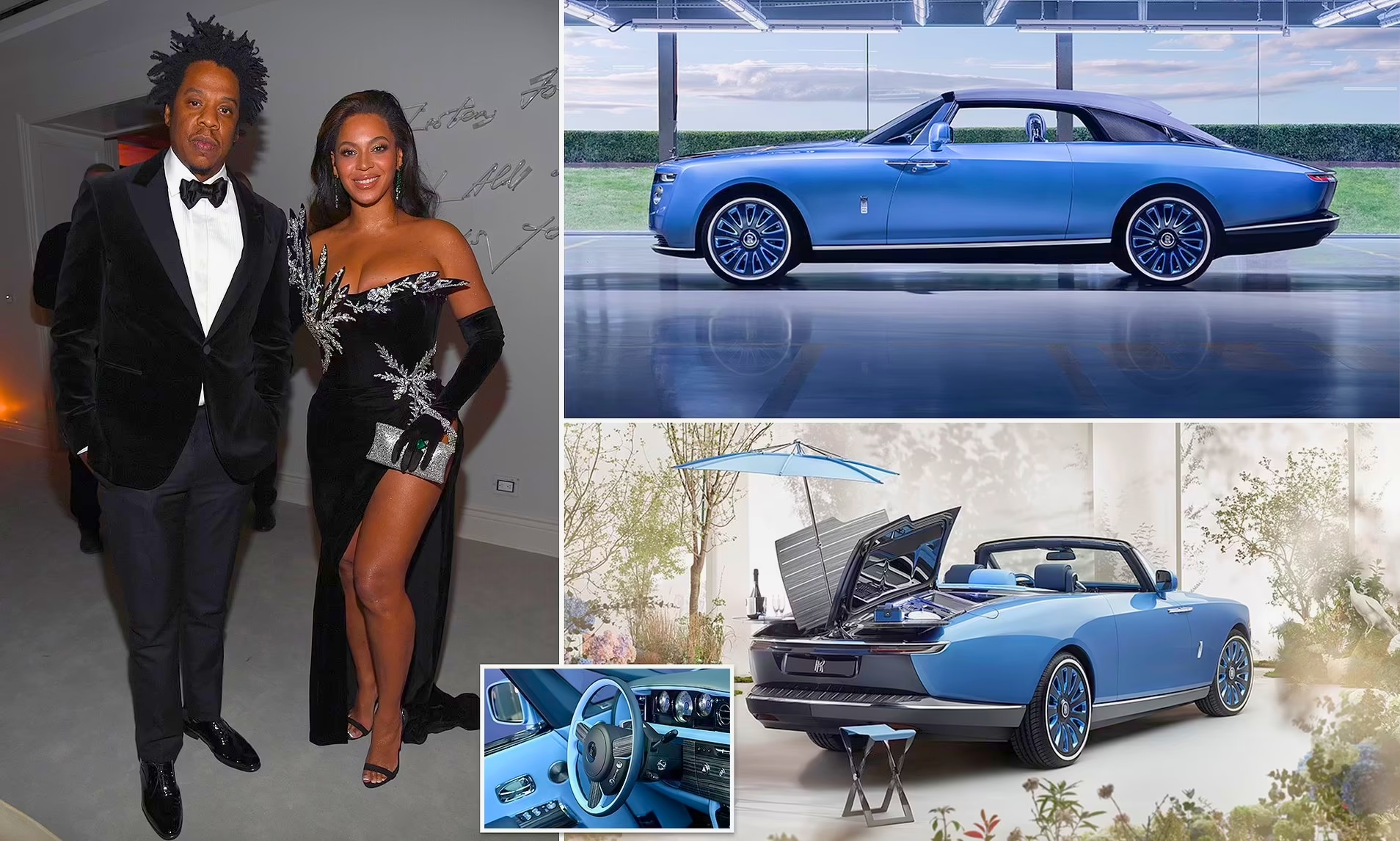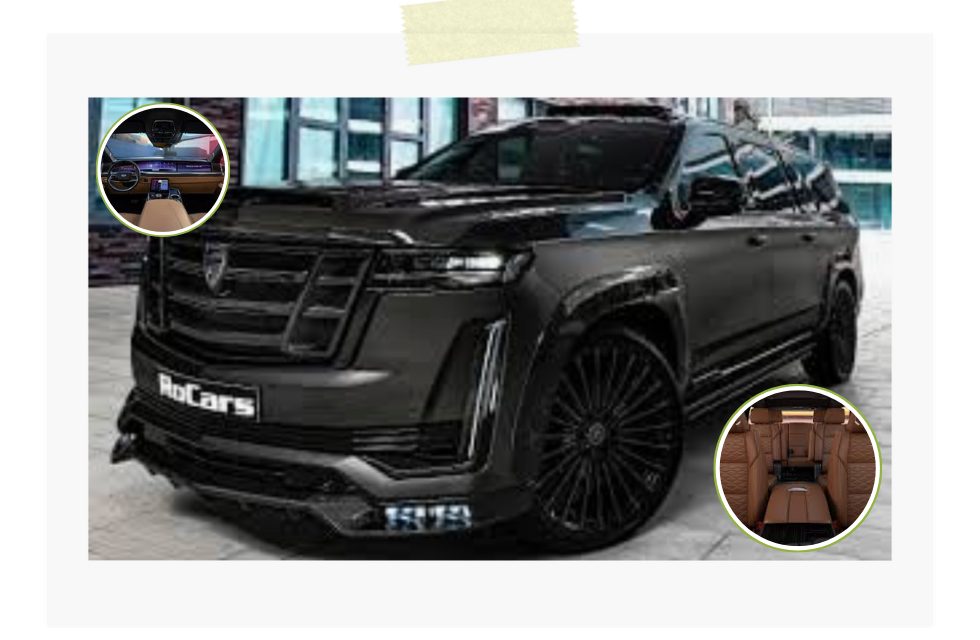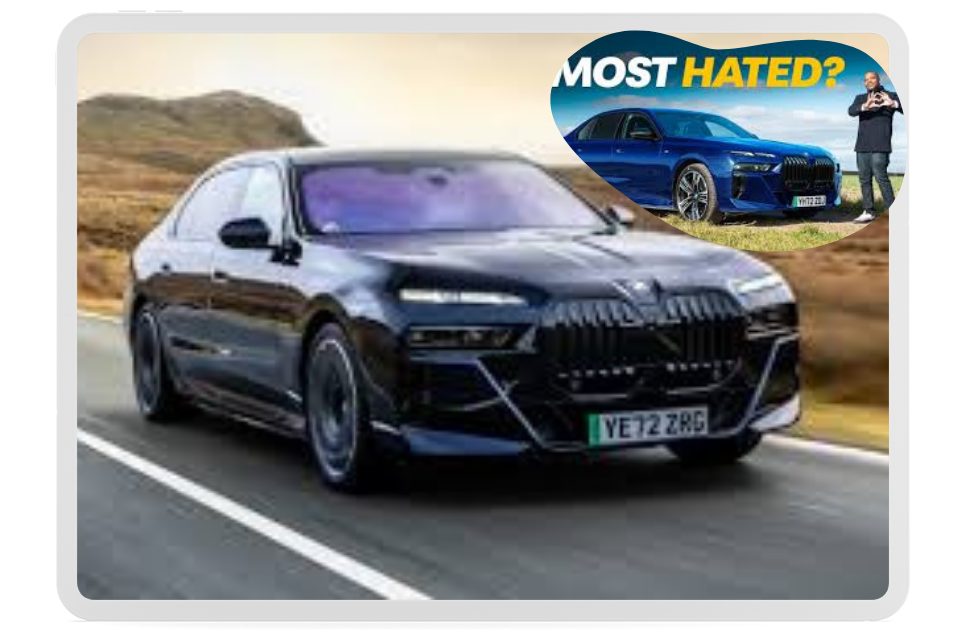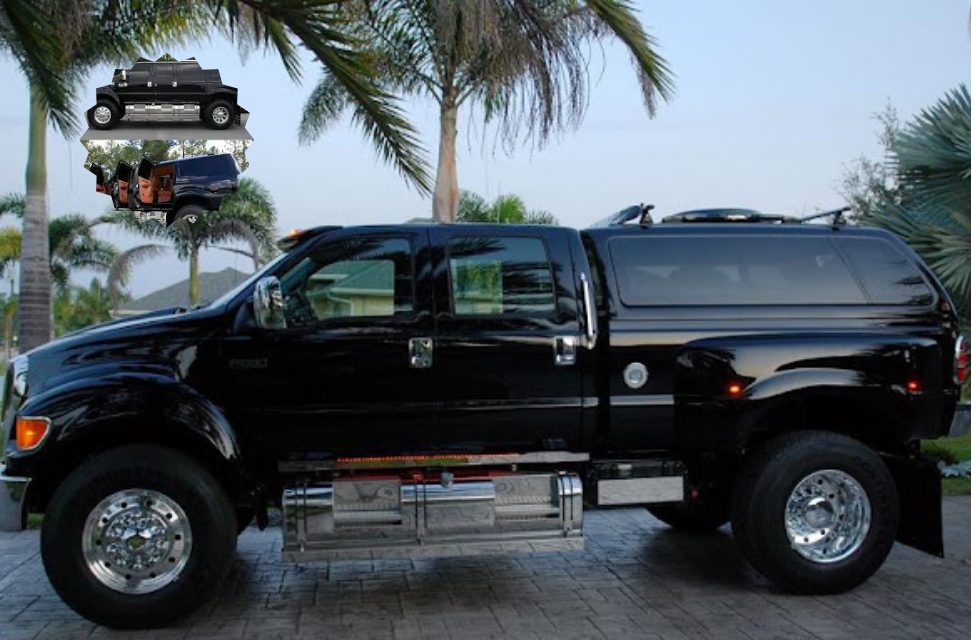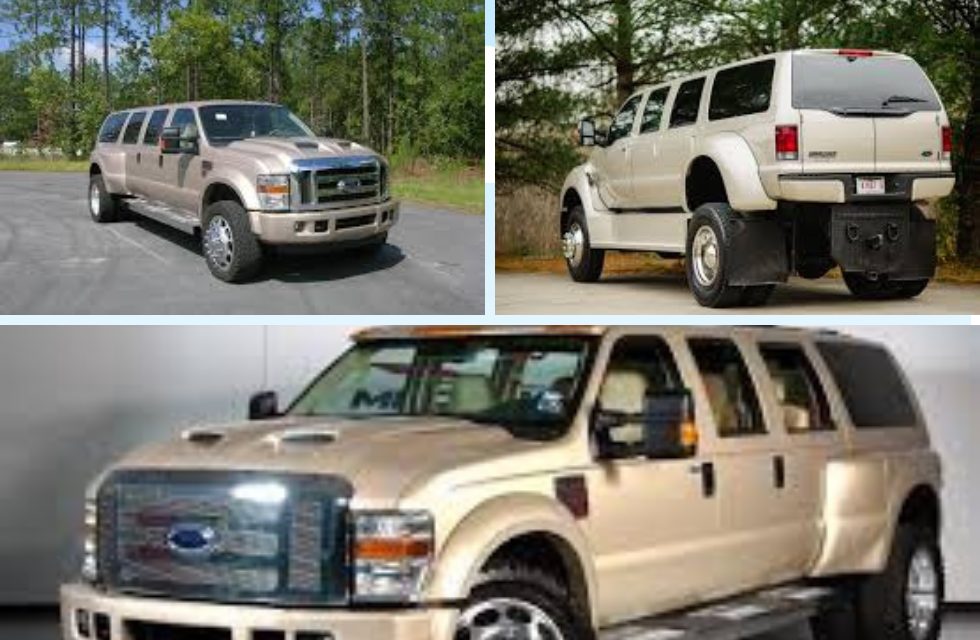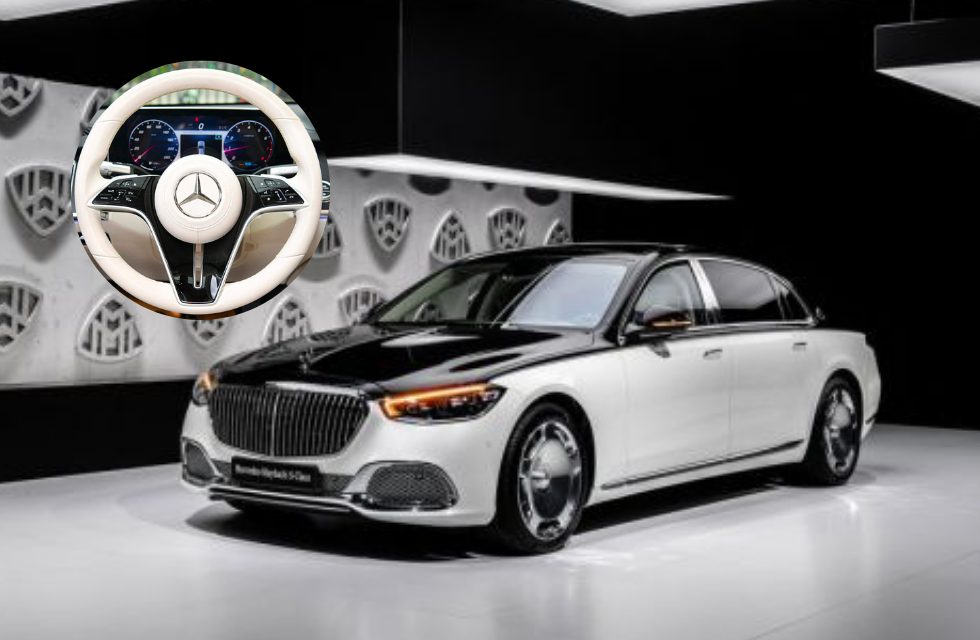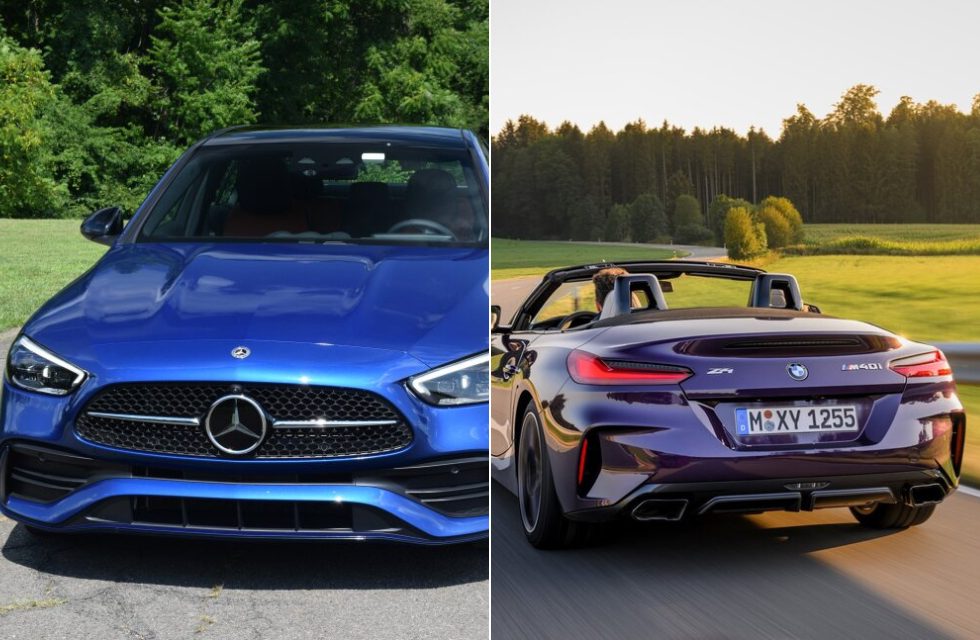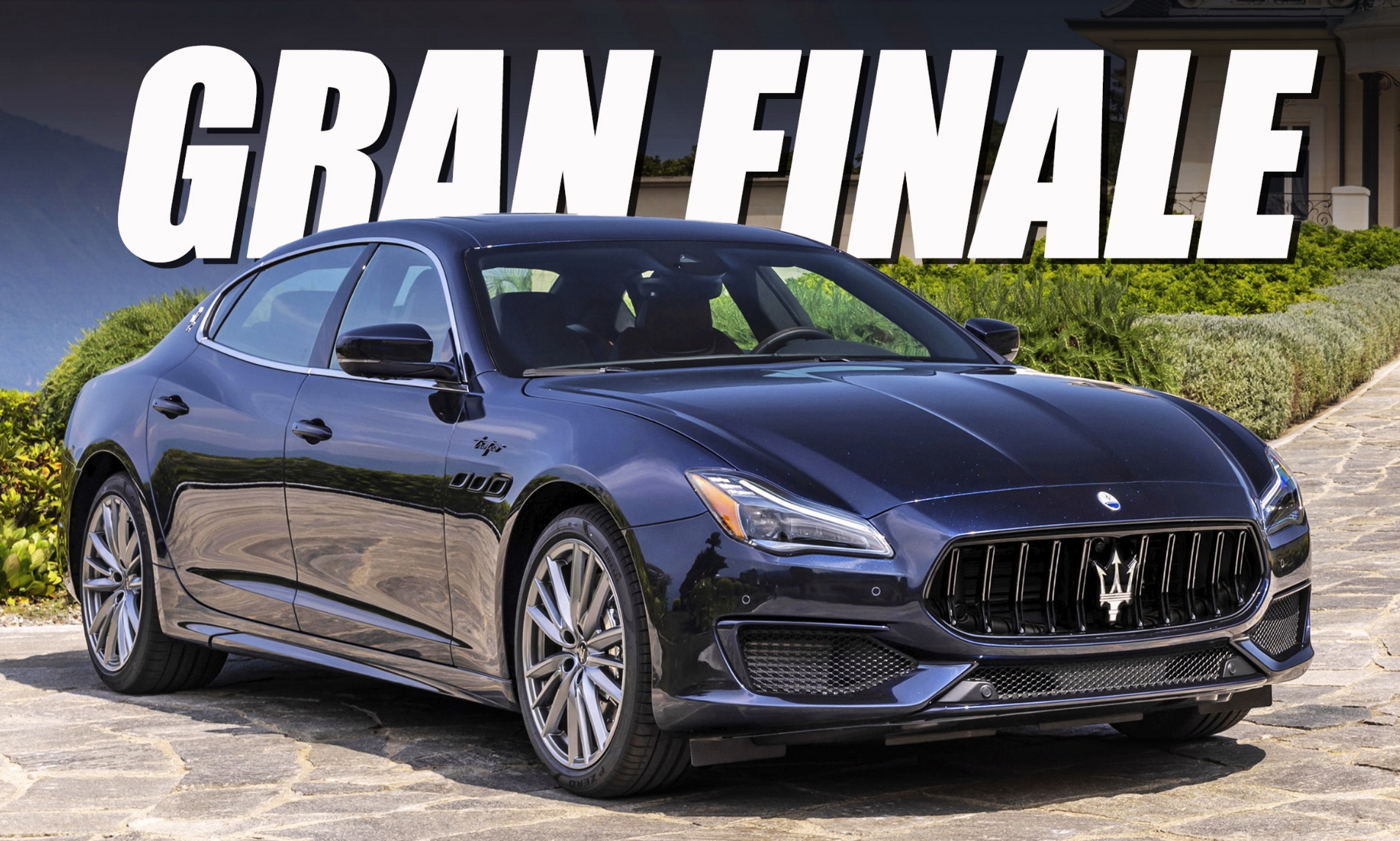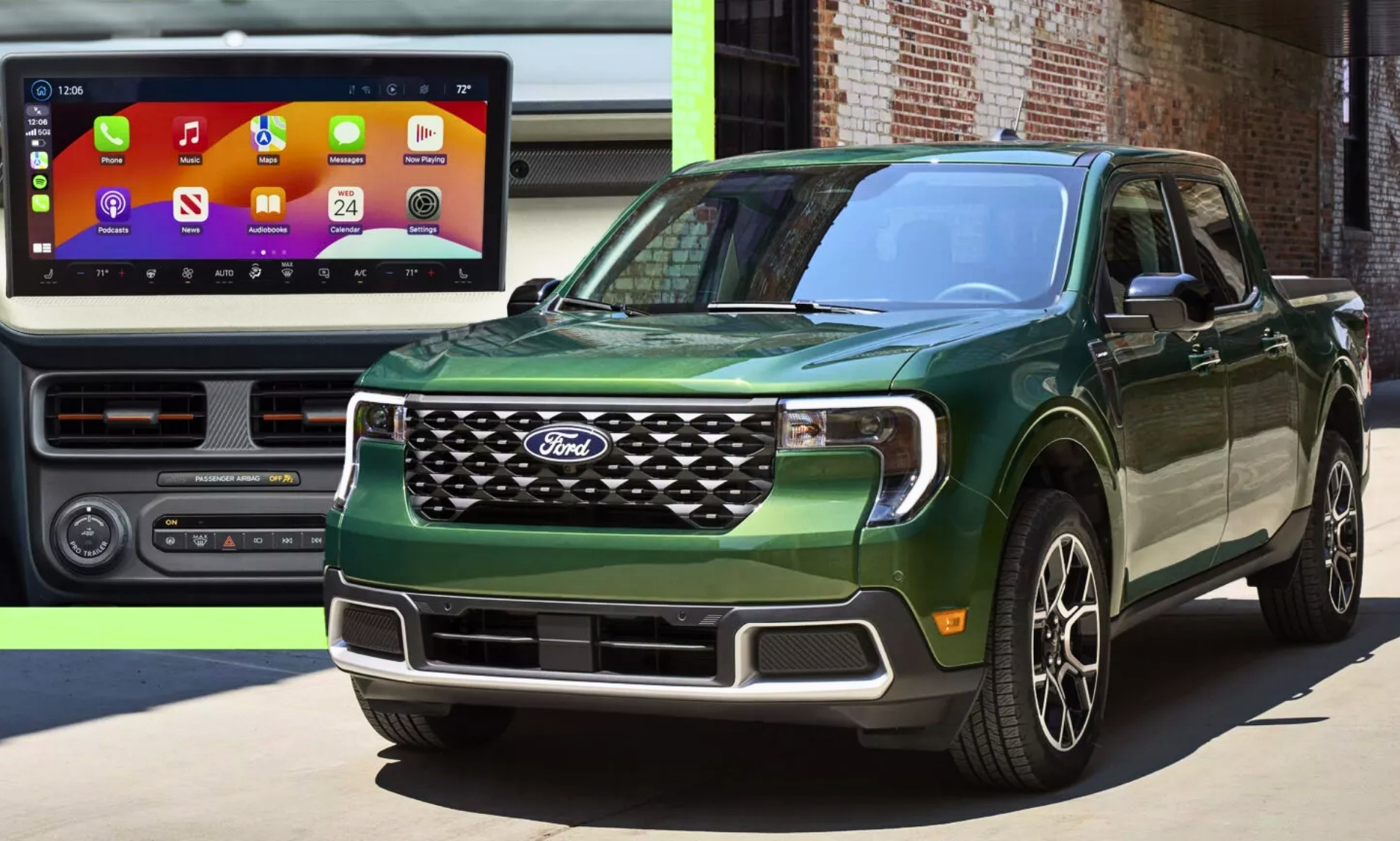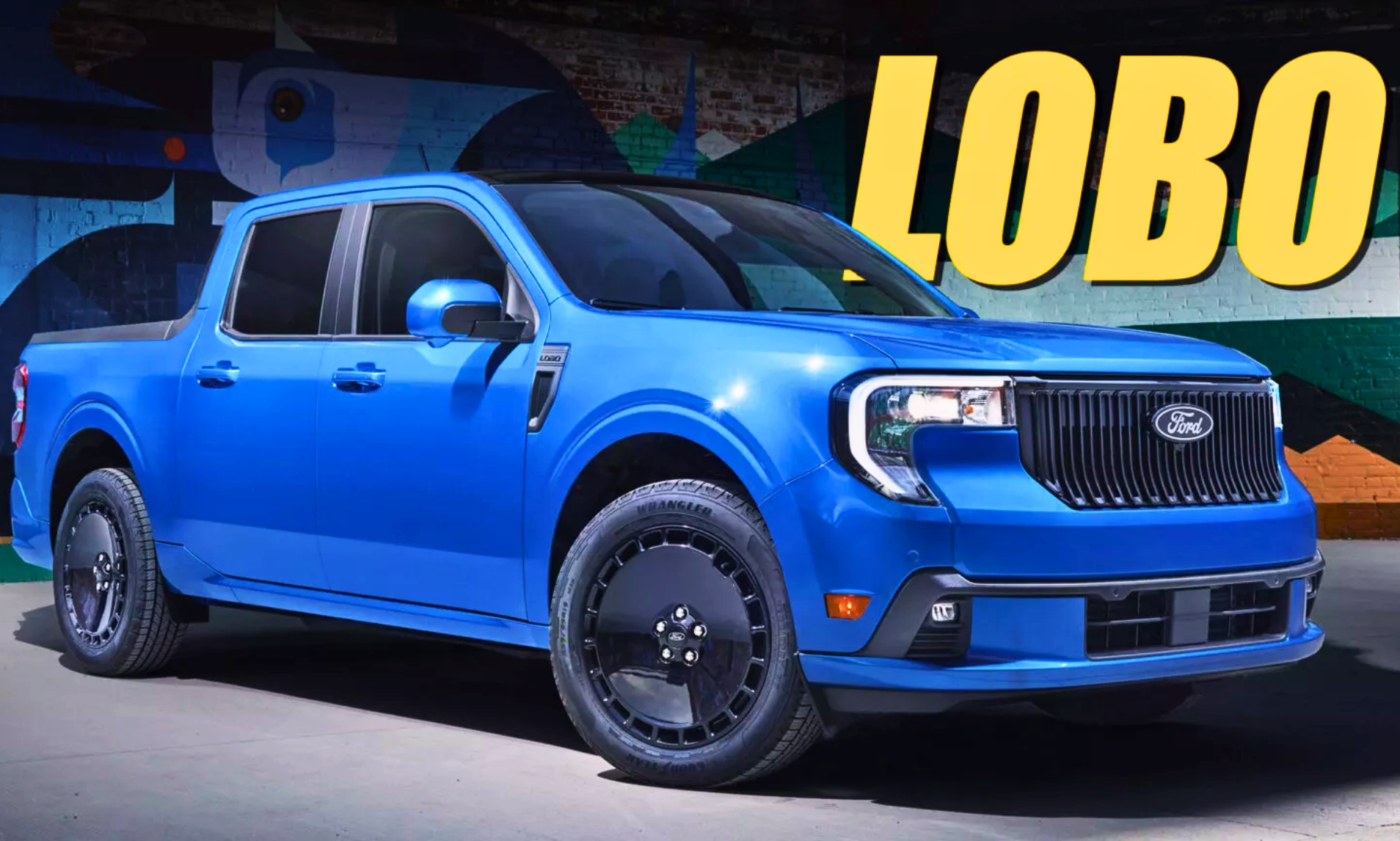Technologies such as autonomous driving, nanotech screens and augmented reality are poised to reshape the cars we drive, experts have told.
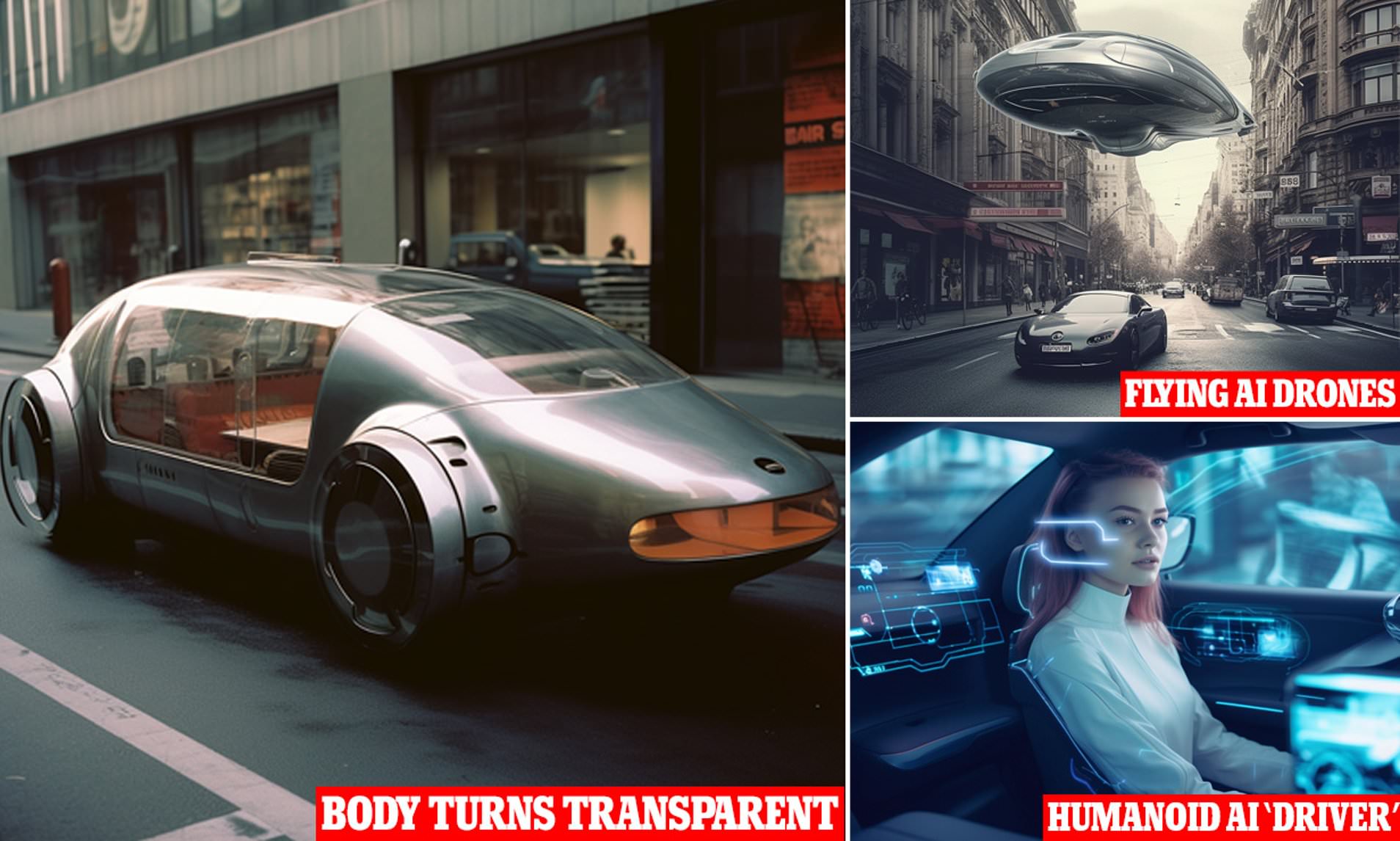
They predict we won’t approach cars armed with keys and rely on the satnav — cars will come to us, plugged into our daily routines and ready to entertain us.
Humanoid AI avatars will know what we want in advance and steer us to our destinations in cars powered by electricity or hydrogen. Technologies such as ‘full’ autonomous driving — a car that is aware and capable of making its own choices —and flying vehicles will reshape the cities around us.
DailyMail.com used the popular AI art generator Midjourney to create images of what the cars, car interiors and roads of the future might look like based on these predictions.
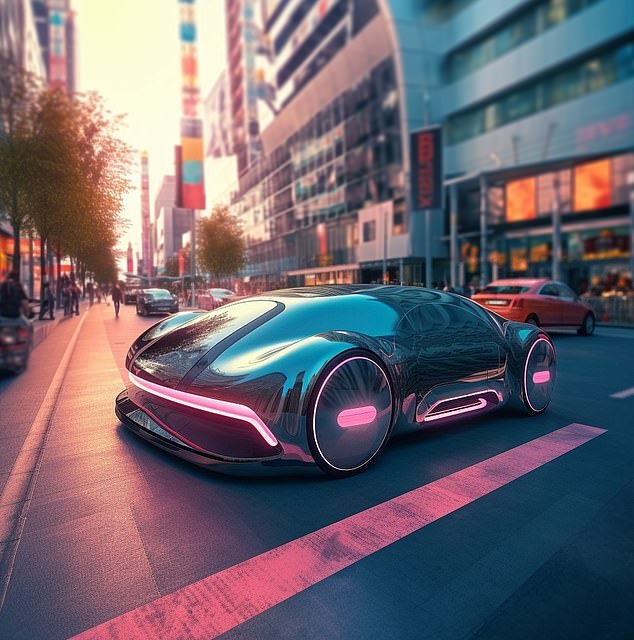
Autonomous cars will appear on demand
The car of the future will be electric, autonomous and powered by AI, explains Przemysław Krokosz, edge and embedded technology expert at global software solutions provider Mobica.
By 2035, autonomous driving is predicted to create $300 billion to $400 billion in revenue, according to McKinsey.
AI hologram ‘driver’ accompanies passengers
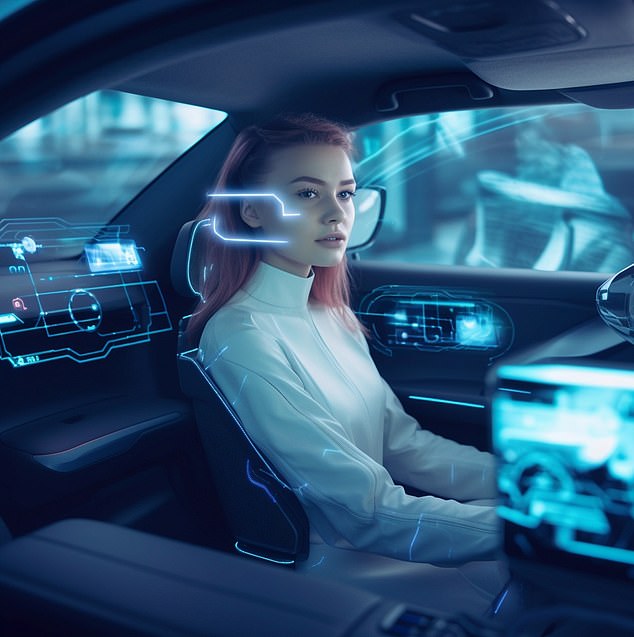
Passengers might interact with the AI powering their car in the form of a holographic avatar — with a personality to suit the driver’s tastes.
Mr Krokosz said: ‘The vehicle’s onboard Artificial Intelligence (AI) will be able to recognize passengers and adjust the vehicle’s settings and controls to their preferences – with the ability to answer any queries and keep an engaging conversation, amongst other tasks.
‘This AI will likely be represented by an animated holographic avatar, which can speak and react in a human-like fashion.’
The interior of the cars of the future will be reshaped as passengers are freed from the ‘nuisance’ of driving, Mr Krokosz believes.
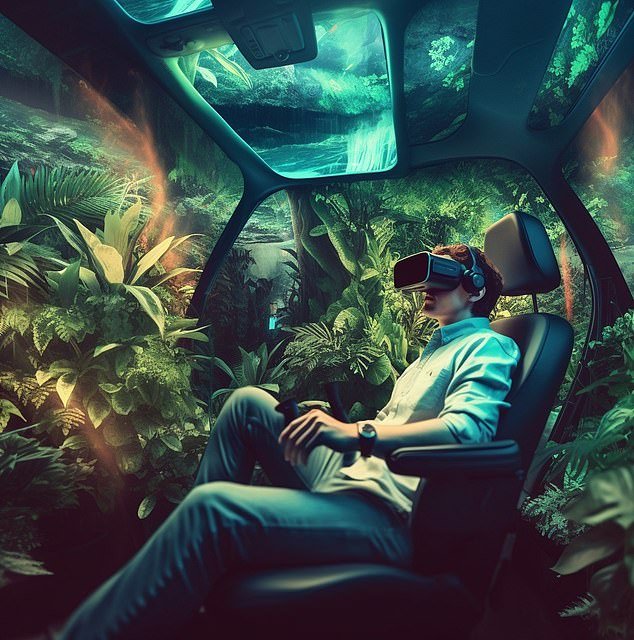
VR will turn car interiors into entertainment zones
Inside cars, virtual and augmented reality will create entertainment that is like real-life holograms.
Mr Krokosz said: ‘They will have spare time on their hands which they can spend being productive or on entertainment, rest and relaxation.
‘We have already seen gaming in vehicles, but advances in holographic projections will bring more immersive and engaging experiences to onboard entertainment – without the need for AR/VR goggles.
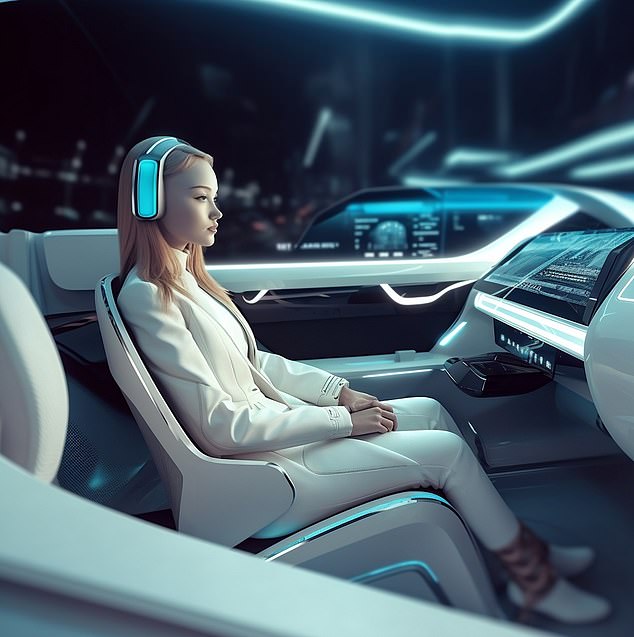
Immersive experiences with no AR goggles
Inside cars, entertainment will be personalized to each passenger — with AI music and projections built to entertain that particular person, Mr Krokosz said.
He said: ‘The unparalleled comforts of the rest and relaxation mode will bring the ambient lighting and interior projections of soothing landscapes to any tired passengers, with a noise-canceling supported zonal audio system playing AI-synthesized music, based on individual preferences.’
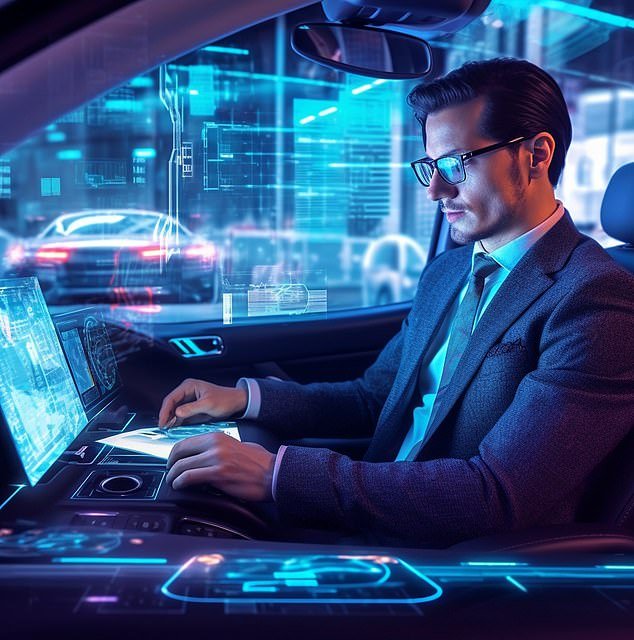
Autonomous cars will turn into offices
As cars shift towards being fully autonomous, people may use them as a workspace, explains Bertrand Boisseau, Automotive Lead at Canonical.
Boisseau said: ‘Most of us already take business calls from our vehicles.
‘But in the very near future, our cars may become even more productivity-centric spaces, enabling video calls and advanced work collaboration.
‘Automotive companies may soon become more like tech companies providing content and connected services.’
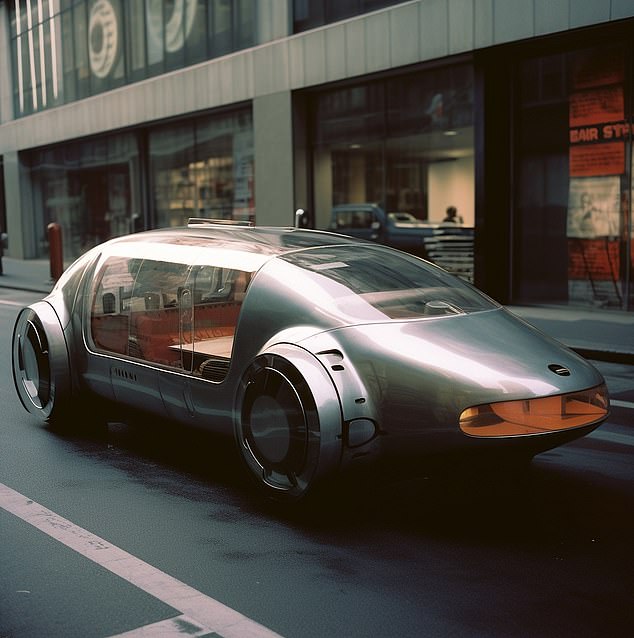
Car bodies will turn transparent at will
The glass in cars will be able to turn transparent at will — and information such as speed will flash up directly on the windscreen for drivers, said Dr Hossein Ardekani, Head Research Scientist at transparent OLED specialist Nextgen Nano.
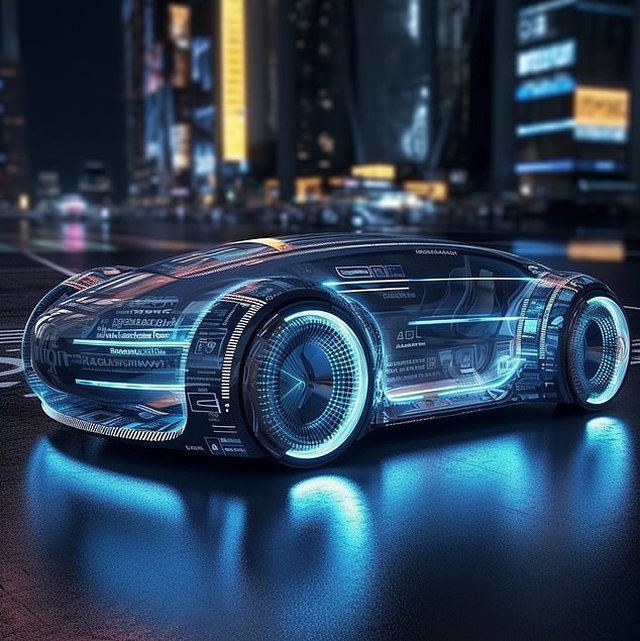
Cars will display advertising on the outside
Dr Ardekani’s company has recently made a breakthrough in transparent OLED technology which allows screens to work like two-way mirrors, so they work like a screen from one side but remain transparent from the other.
Dr Ardekani said: ‘This has potentially significant implications, for example, allowing all the glass windows on everything from buses and trains to entire buildings to operate as advertising digital displays from the outside but stay transparent for commuters or occupants looking out.’
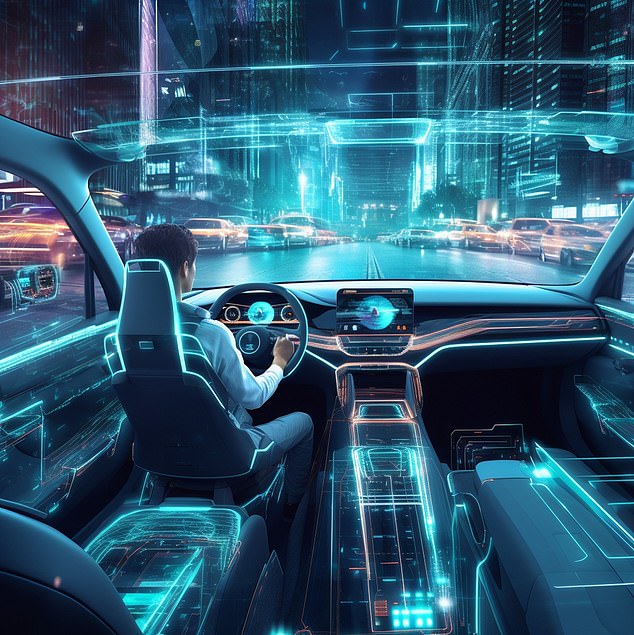
Drivers will see information projected over their view
The shape-shifting LED glass could also mean that drivers see useful information within the glass on the outside of their cars.
Dr Ardekani said: ‘It could also have the potential to be used in heads-up displays in cars to give drivers vital information without moving their eyes away from the road or in smart glasses to give users enhanced privacy.’
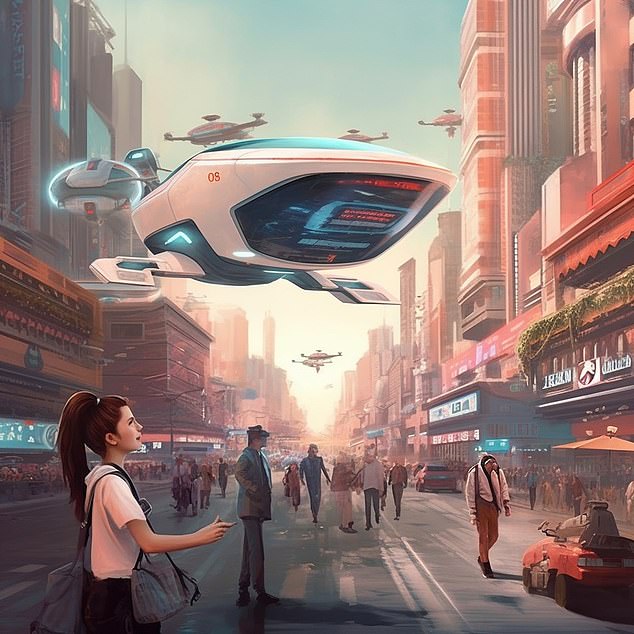
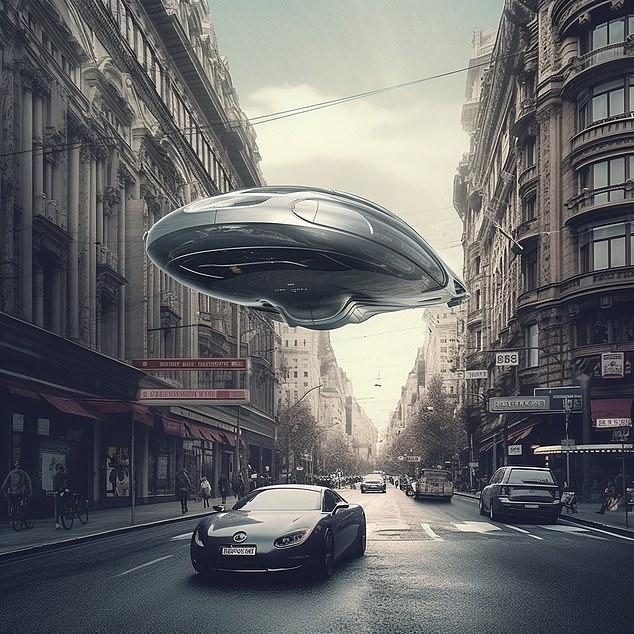
Flying cars will be worth trillions
Science fiction writer Isaac Asimov predicted in 1964 that flying cars would be common by 2014 — but multiple start-ups around the world including Volocopter are now marketing flying vehicles, many of them autonomous.
Regulatory hurdles remain, but Morgan Stanley has predicted that flying vehicles could be a $1.5 trillion market by 2040.
Morgan Stanley predicts that flying cars could be as transformative as the car waas in the early 20th Century.
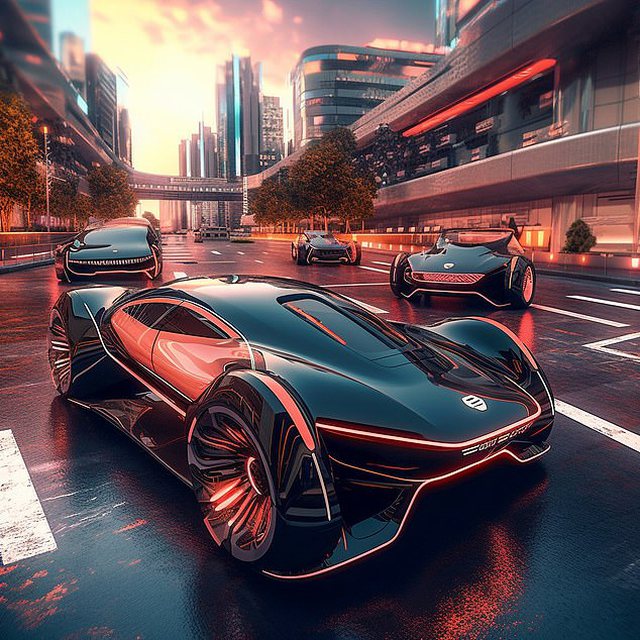
Cars will exist in both reality and the metaverse
The vehicles of the future will be highly personalized, and users will drive them both in VR and the real world, said Jeremy White, Head of Transport Design at Seymourpowell.
Mr White said: ‘What if you could learn to drive your own vehicle around your favorite track virtually during the week and see if you could match it in the real world during a weekday track day?
‘Progressive automotive brands will begin to create new product-defining virtual experiences in a world where everyday driving and products are looking increasingly similar.’
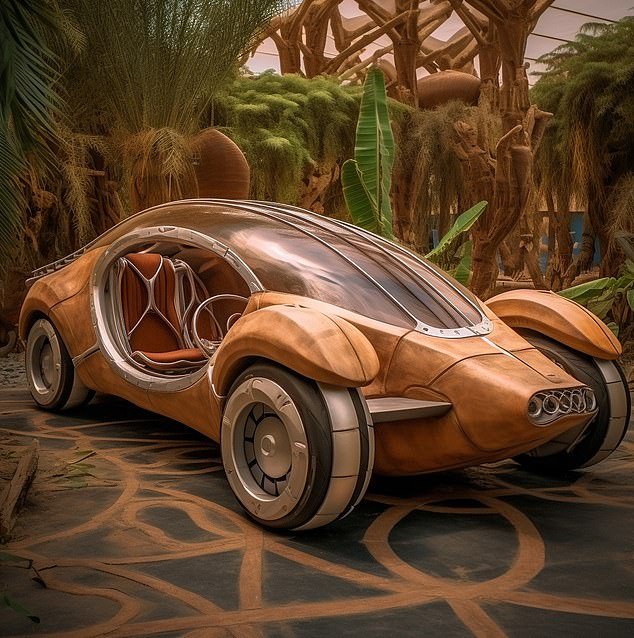
Sustainable cars could be desirable
Mr White believes sustainable interiors built from vegan materials could be highly desirable in the future.
He said: ‘The rebirth of coachbuilding in a modern age will allow customers to own vehicles that express their individual identity, values and desires across all vehicle touchpoints. The material palette can also express a customer’s individuality.
‘Could a vegan interior or the use of sustainable and circular exterior materials install a pride of ownership, for example?’
Share or comment on this article: This is how cars could look by 2050, according to experts (and imagined by AI).

